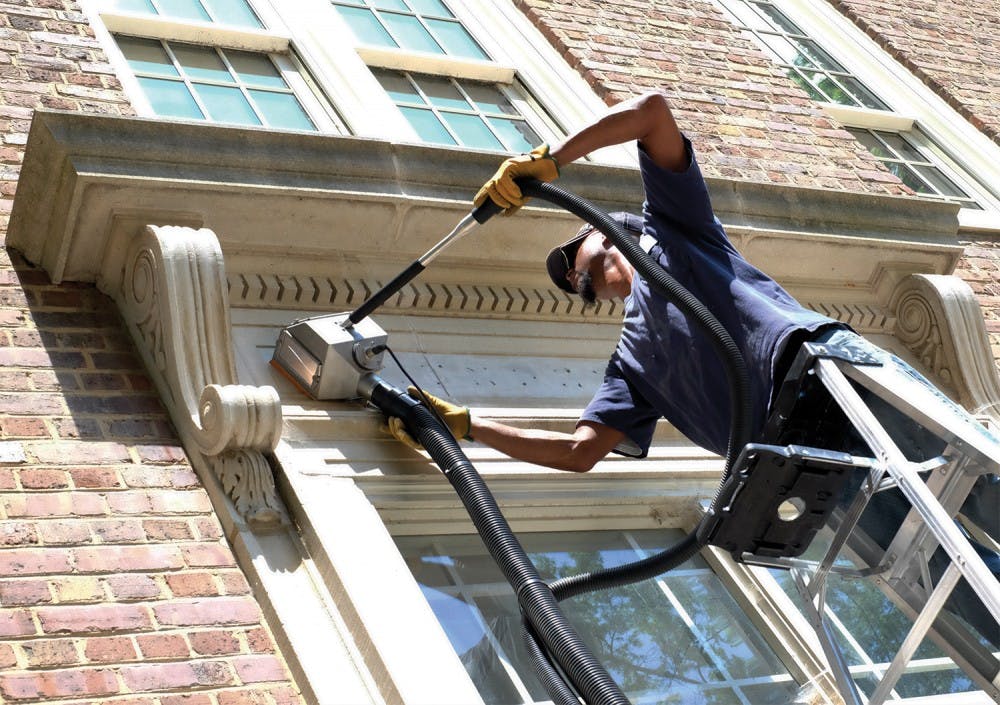The University’s Aug. 12 statement commended Cravey and University police but didn’t address officers entering the graduate student lounge. When asked about the issue Sunday, Jim Gregory, director of media relations, said that statement still applies.
“To be clear, our sign was first taken on the last day of (spring) classes, and then a second sign was taken the same day they tried to seize Prof. Cravey’s sign,” religious studies graduate student Katie Merriman said in an email. “My colleagues have already put up a new sign. The religious studies graduate students have not been issued a letter of apology from the University like Prof. Cravey has received.”
Merriman said she personally bought the poster paper used for the lounge signs. After the sign was removed from the lounge the first time, Merriman said she contacted the police about getting it back. She said she also asked police why they hadn’t asked the graduate students to remove the sign instead of entering their locked lounge.
“Even after this conversation, when our second sign was taken down a couple weeks ago, again we were not contacted, and again our property was seized and destroyed instead of perhaps being left on the table,” Merriman said.
After the second sign was taken Aug. 7, Merriman said Department of Public Safety Chief Jeff McCracken offered to reimburse her for the sign.
On Aug. 7, Gregory said University police were following the University policy “Policy on Use of University Facilities for Noncommercial and Commercial Purposes,” Section VI.B.2, which says, “No notice, advertisement or document of any kind shall be attached to any wall, door, lamppost, tree or other surface except as provided in Section VI.B.1.”
Section VI.B.1 identifies where public information can be posted, such as on the wooden cubes next to the Pit.
Fajack said he has asked DPS not to enforce the policy in Hurston Hall cases. On Aug. 14, Gregory said administrators had no timeline for when the policy would be updated.
“The process for updating this particular policy is that it will have to go through the Facilities Working Group, then to the Faculty Executive Committee, then to the Cabinet for approval,” Gregory said in an email.
These events came only months after UNC was awarded a green-light rating for freedom of speech by the Foundation for Individual Rights in Education, a student rights activist group.
“Overall, the University’s policies are protective of student speech and faculty speech,” said Azhar Majeed, director of the activist group’s Individual Rights Education Program. “Even this policy — it certainly has room for improvement, but the main problem is how it was applied in this case.”
Majeed said the group already knew about the policy used in these cases.
To get the day's news and headlines in your inbox each morning, sign up for our email newsletters.
“This one is pretty narrow in that it applies to very few exterior surfaces,” Majeed said. “The policy, as written, is permissible. It could be improved, but it is on the whole protective of free speech. The University is providing spaces for student free speech, faculty free speech.”
While he admitted the policy isn’t perfect, Majeed suggested that proper police training could prevent situations that infringe on freedom of speech.
“I’m wondering if they just misunderstood the policy and applied it to a situation that it doesn’t really apply to,” Majeed said. “Universities like UNC have a little more leeway to regulate postings on trees or lampposts or the exteriors of buildings like walls, but if you’re talking about something that was on the inside of a professor’s office space, that kind of leeway doesn’t apply.”
university@dailytarheel.com




